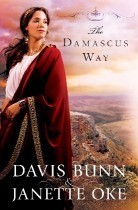The Pharisees: First-Century Power Players, Part 2

To help you better understand the historical-cultural context of the Acts of Faith series (The Centurion's Wife, The Hidden Flame, and The Damascus Way), I'd like to introduce you to the primary Judean authorities at the early part of Acts. This is Part 2 of 10.
The Pharisees
The movement that identified themselves as the Pharisees arose out of their abhorrence of the attitudes and habits of the increasingly worldly culture. Jesus' appearance on earth came at a time when God had effectively washed his hands of his chosen people. The prophets repeatedly had called for the Jews to return to Jehovah and leave their wicked ways. The Pharisees saw themselves as the only group that truly echoed that call.
Most Judeans ridiculed the Pharisees and their devout habits. They responded to this scorn by distancing themselves from society. Everything they did, including their dress, was a magnification of the Law as they interpreted it.
Over time the Pharisees had become vehemently attached to innumerable rules and regulations in an attempt to protect and preserve the law as given to Moses, dictating whether or not an individual could lay claim to the term righteous. They dressed a certain way, maintained certain attitudes toward the politics of their time, were meticulous in their eating habits, and held to a rigid structure of prayer. The Pharisaic scribes considered themselves the lone guardians of God's law.
Here are links to each of the books in the Acts of Faith Series. I believe it will enhance your understanding of first-century power players to read the novels as we progress through this series.



To make sure you receive every article in this 10-part series, please subscribe to my blog via e-mail or your feed reader by clicking this link: http://feeds.feedburner.com/DavisBunn
Coming next: The Sadducees









